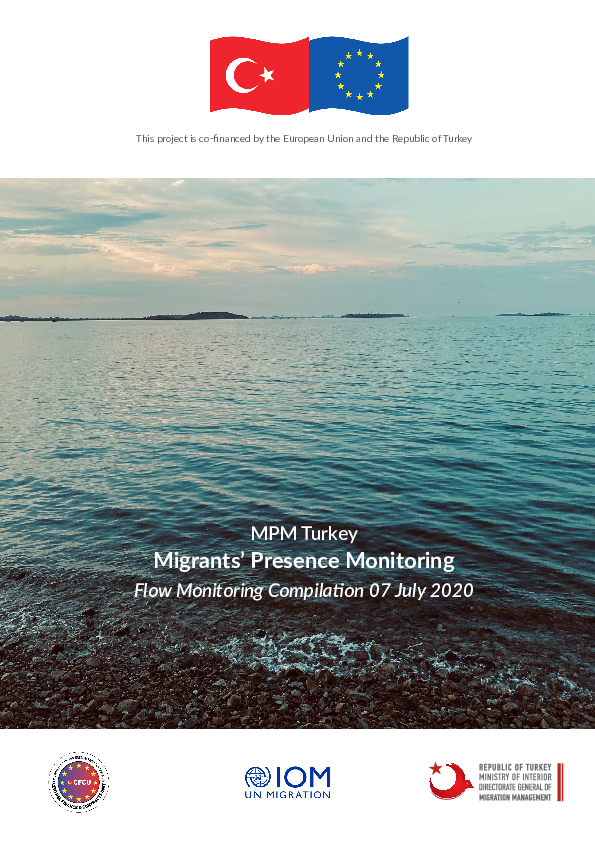-
Countries
-
Data and Analysis
-
Special Focus
-
Crisis Responses
Turkey — Migrant Presence Monitoring - Situation Report (July 2020)

Contacter
DTM Turkey, DTMTurkey@iom.int
Langue
English
Emplacement
Republic of Türkiye
Période couverte
Jul 01 2020
Jul 31 2020
Activité
- Flow Monitoring Survey
- Flow Monitoring
- Migrants presence
- Mobility Tracking
According to the latest available figures from the Turkish Directorate General of Migration Management (DGMM), there are more than 4.6* million foreign nationals present in Turkish territory, 3.6* million of whom are seeking international protection. Most are Syrians (3,591,892* individuals) who are granted temporary protection status. In addition, international protection applicants from countries including Afghanistan, the Islamic Republic of Iran and Iraq constitute another group of foreign nationals. According to DGMM, as of end of 2019, there were 56,417* international protection applicants present in Turkey. The number of foreign nationals has decreased by 88,976 in comparison to June 2019 (3.7 million foreign nationals). In addition, there are 1,008,754* foreign nationals present in Turkey holding residency permits, including humanitarian residency holders. Compared to June 2019, this is an increase of 449 individuals. The exact number of humanitarian residency holders is unknown, but it is estimated that there are more than several thousand humanitarian residency permit holders.
Turkey’s temporary protection regime grants the 3,591,892* Syrian nationals the right to legally stay in Turkey as well as obtain some level of access to basic services. The vast majority - 3,529,239* individuals – live outside of formal camps, known as temporary accommodation centers, thus primarily residing across the Turkish border provinces of Hatay, Adana and Kilis. As such, only 62,653* Syrians live in formal camps, the majority of which are located close to the Syrian border. Compared to June 2019 when 13 temporary accommodation centers were hosting migrants in Turkey, only seven remain operational with six no longer in service. As a result, 46,079 fewer Syrians currently reside in the centers.
